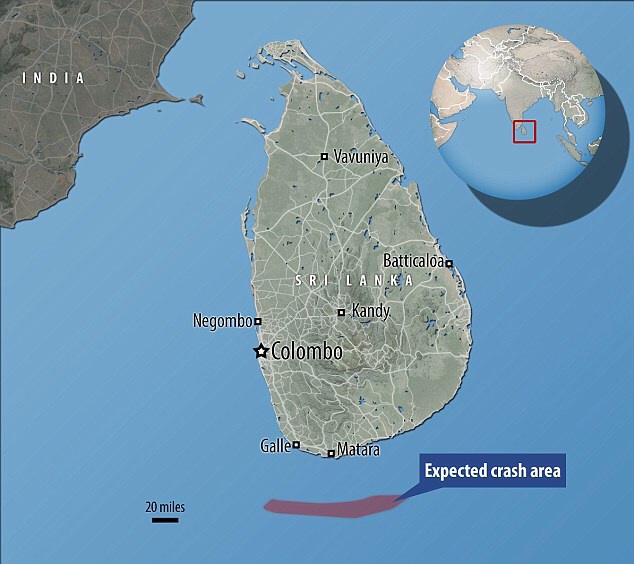
A strange piece of space junk is expected to plummet to Earth in November, but researchers don’t currently have any idea what it is.
The object, dubbed WTF1190F, is set to land in the Indian Ocean, around 40 miles (65km) off the southern tip of Sri Lanka, at 6:20 UTC on 13 November.
It measures up to 7ft (2 metres) long and it could be a piece of rocket stage from a recent lunar mission, or even part of an Apollo program craft that has been in space for more than 40 years.
unexplained space object
Astronomers at the European Space Agency’s (Esa) Near Earth Object office in the Netherlands are monitoring the space junk’s journey carefully (WTF1190F is circled) and said it could help scientists improve our understanding of how any object – man-made or natural – interacts with Earth’s atmosphere
But rather than threatening life on Earth as we know it, the object will give scientists a rare opportunity to observe a relatively small impact from its approach to landing.
WTF1190F’s trajectory was first calculated in 2012.
The unknown object was rediscovered by astronomers at the Catalina Sky Survey, based at the University of Arizona earlier this month.
Astronomers at the European Space Agency’s (Esa) Near Earth Object office in Noordwijk, the Netherlands, are now monitoring the space junk’s journey carefully.
It is also being used to test plans put in place to monitor potentially dangerous space objects hurtling towards Earth.
The agency said that WT1190F ‘poses very little risk to anyone but could help scientists improve our understanding of how any object – man-made or natural – interacts with Earth’s atmosphere.’

The way it moves also suggests the object is hollow inside.
It’s not known how many pieces of space junk orbit the Earth and moon, but WT1190F is rare.
It is believed to be one of only 20 or so man-made objects tracked in distant orbit, according to Gareth Williams, an astronomer at the Minor Planet Centre in Cambridge, Massachusetts.
And it’s not known exactly how the object was propelled onto a collision-course with Earth.
Originally posted 2015-10-28 12:16:17. Republished by Blog Post Promoter













